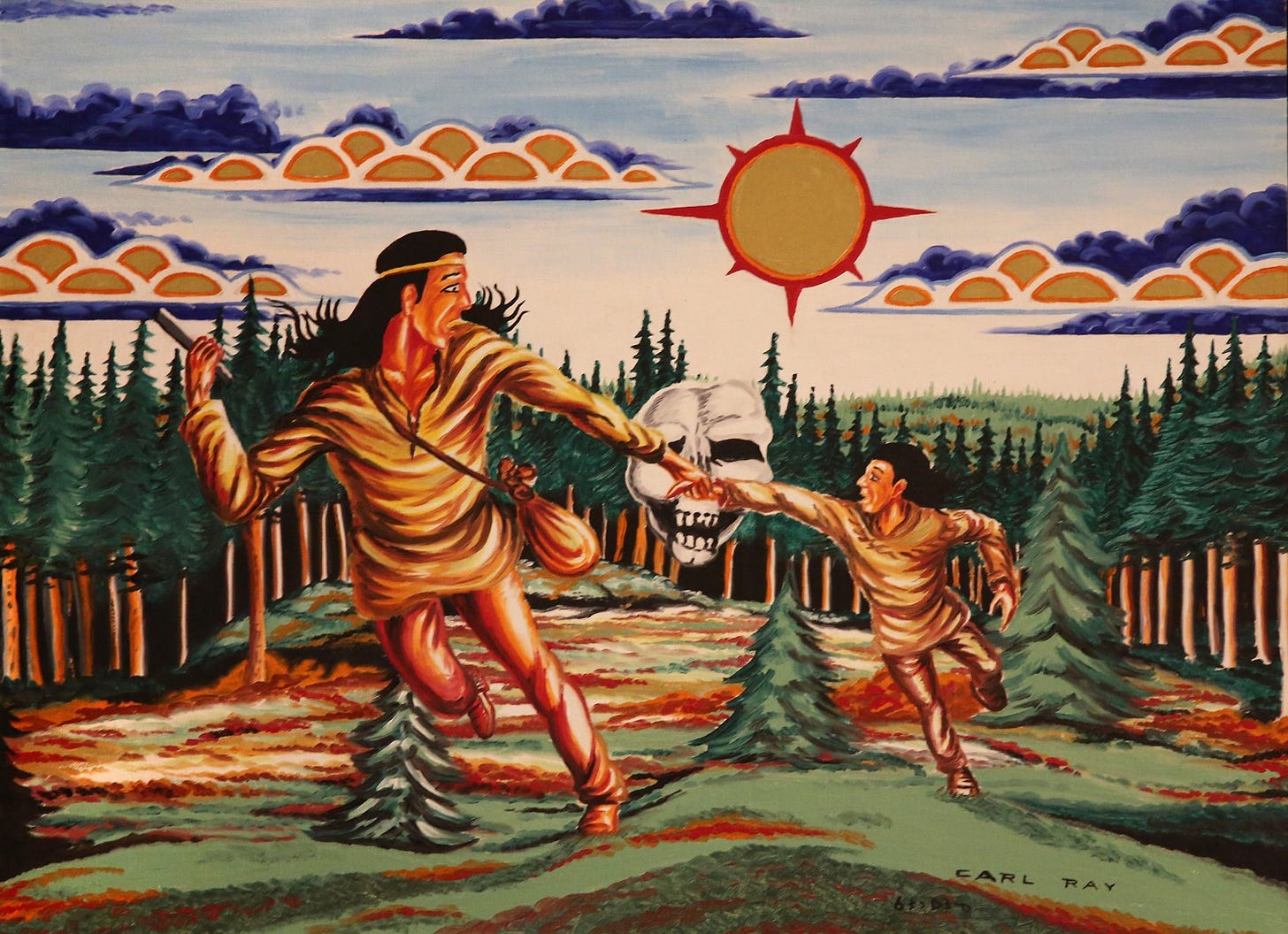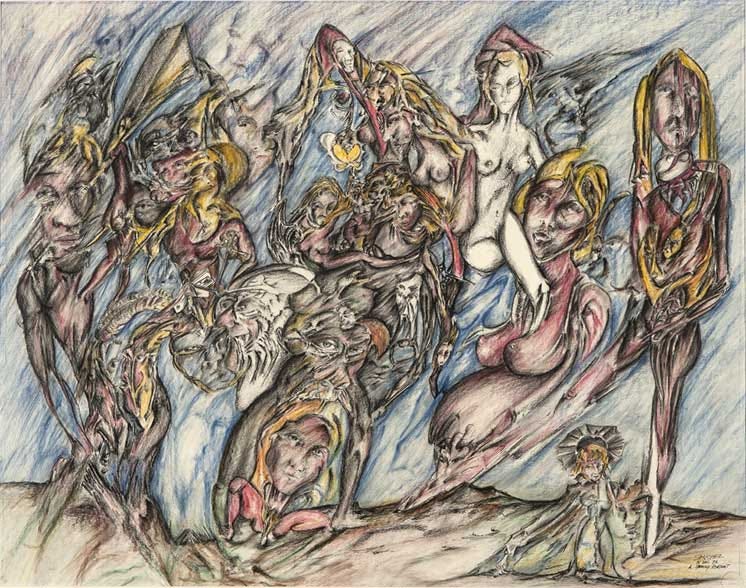Hello friends,
Throughout May, I am showcasing visual artists in Canada. Some well known, others not so much.
Yesterday, I introduced you to four of the founding members of Professional Native Indian Artists Inc., also known as the Indigenous (or Indian) Group of Seven. Missed it? Hit the link to see work by Jackson Beardy, Eddy Cobiness, Alex Janvier, and Norval Morrisseau.
Today, I am featuring the three remaining members, and I am highlighting some resources for those of you who want to learn more about the group and about decolonizing art.
Daphne Odjig (Odawa-Potawatomi-English) was an eminent artist, whose paintings are often characterized as Woodlands or pictographic style, but she experimented with many different styles, including expressionism and cubism, throughout her career, which spanned six decades.
Odjig was awarded the Order of Canada, the Governor General’s Award, and five honorary doctorates.
She wrote:
“If my work as an artist has somehow helped to open doors between our people and the non-native community, then I am glad. I am even more deeply pleased if it has helped to encourage the young people that have followed our generation, to express their pride in our heritage more openly, more joyfully than I would have ever dared to think possible.” (Odjig: the art of Daphne Odjig, p. 78)
Shown below: The Joy of Intimacy
Carl Ray (Cree), a member of the Woodlands school, was one of the first Cree to depict sacred Indigenous legends in his paintings, despite prohibitions. This included stories he had learned from his grandfather, a revered medicine man or shaman.
Ray frequently painted humans, animals and legendary creatures, using a limited palette, often in both ink and watercolour.
Shown below: Untitled
Joseph Sanchez (Pueblo-German-Spanish) is an American artist from the White Mountain Apache Reservation and Taos Pueblo. Active in Indigenous and Chicano arts, he joined Professional Native Indian Artists Inc. while living in Canada in the 1970s.
His surrealist paintings have been recognized and exhibited widely throughout Canada, Europe, and the United States.
Shown below: Family
Sift.
Sift through history.
Looking for a deep dive into the history of the Indigenous Group of Seven? Check out the book 7: Professional Native Indian Artists Inc. by Michelle LaVallee, a former curator at the MacKenzie Art Gallery in Regina, Saskatchewan.
Short on time? Read LaVallee’s article on the Canada’s History website: “Headwaters of Their Own Stream.”
Here’s a quote:
“Celebrations of culture and identity, as well as tools for education and renewal, the works of these master artists provide a glimpse of struggles overcome, gates broken open, and a legacy that has gone under-recognized. Their work is also a testament to the ongoing relevance and strength of Indigenous peoples, their ideologies, and their cultures.”
Shift.
Let Indigenous art shift your perspective and understanding.
Take a closer, more intimate look at the work of the seven members of the Indigenous Group of Seven, and the social, cultural, and political context in which it was created.
Do you have two minutes? Watch this short video on Professional Native Indian Artists Inc.
How about an hour? If you have a little more time, sit back and watch this one-hour PBS documentary, Native Art Now, for an exploration of contemporary Native American artists.
Lift.
Lift up the Indigenous Arts Collective.
The Indigenous Arts Collective was founded in 2012 to preserve and revitalize endangered Indigenous art forms and enrich lives through Indigenous arts and culture. It is proudly powered and empowered by Indigenous women.
Visit its website to learn more about the collective’s vital work and to make a donation, shop for Indigenous art and art supplies, discover new-to-you artists, or learn about resources for Indigenous artists.
Before you go
Would you do me a small favour? If you enjoy reading Sift. Shift. Lift. please take a moment to like, share, or comment below. Thank you.








Thanks for sharing @B.A. Lampman
Have you considered publishing these posts as a book? I find myself wanting to have them by my side to look through, together. I think they would make an incredible and totally original text, something so different from the usual catalog genre, bridging the divide, meeting the reader as a person of many angles.